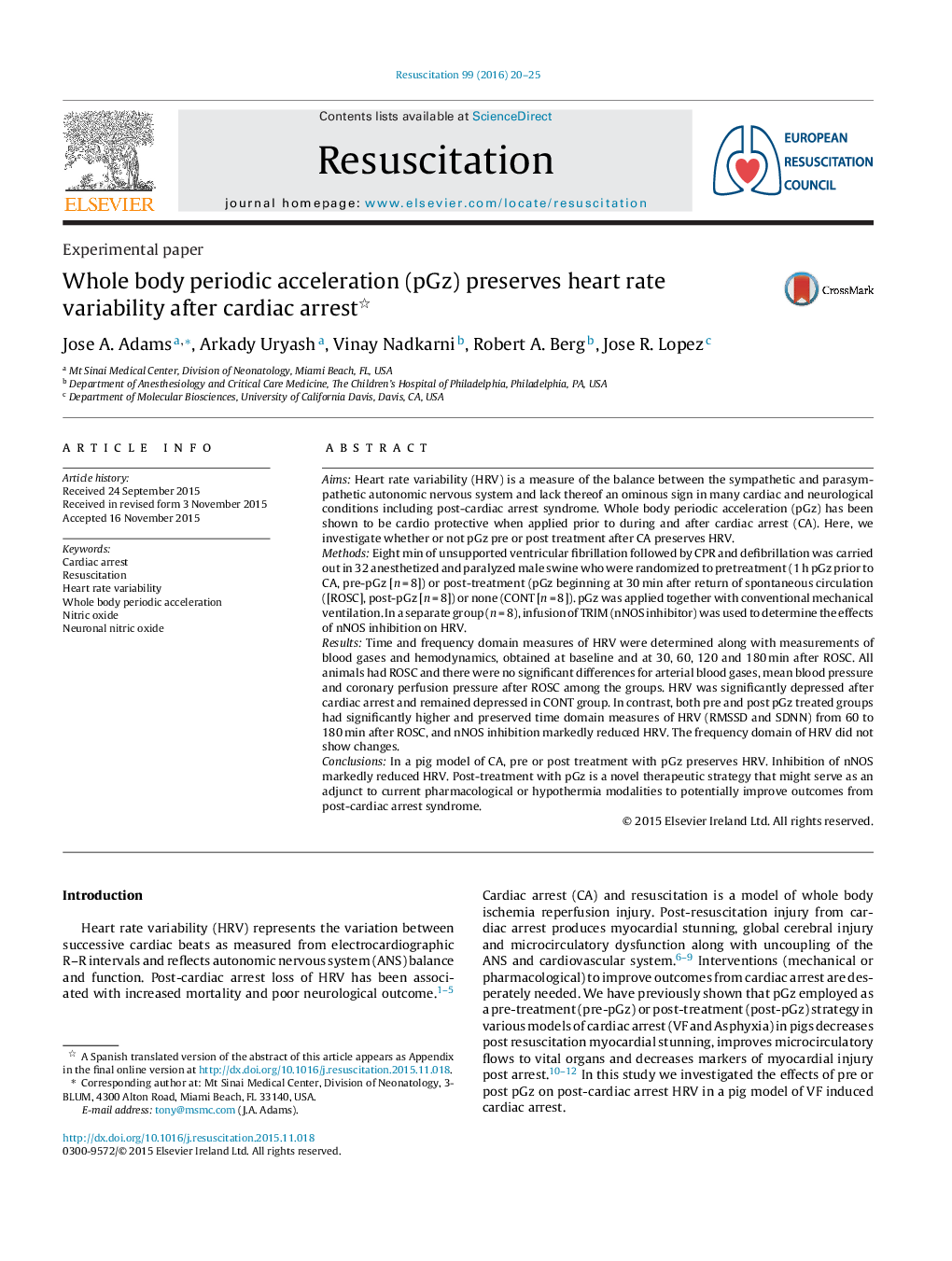| کد مقاله | کد نشریه | سال انتشار | مقاله انگلیسی | نسخه تمام متن |
|---|---|---|---|---|
| 3007810 | 1578985 | 2016 | 6 صفحه PDF | دانلود رایگان |
AimsHeart rate variability (HRV) is a measure of the balance between the sympathetic and parasympathetic autonomic nervous system and lack thereof an ominous sign in many cardiac and neurological conditions including post-cardiac arrest syndrome. Whole body periodic acceleration (pGz) has been shown to be cardio protective when applied prior to during and after cardiac arrest (CA). Here, we investigate whether or not pGz pre or post treatment after CA preserves HRV.MethodsEight min of unsupported ventricular fibrillation followed by CPR and defibrillation was carried out in 32 anesthetized and paralyzed male swine who were randomized to pretreatment (1 h pGz prior to CA, pre-pGz [n = 8]) or post-treatment (pGz beginning at 30 min after return of spontaneous circulation ([ROSC], post-pGz [n = 8]) or none (CONT [n = 8]). pGz was applied together with conventional mechanical ventilation. In a separate group (n = 8), infusion of TRIM (nNOS inhibitor) was used to determine the effects of nNOS inhibition on HRV.ResultsTime and frequency domain measures of HRV were determined along with measurements of blood gases and hemodynamics, obtained at baseline and at 30, 60, 120 and 180 min after ROSC. All animals had ROSC and there were no significant differences for arterial blood gases, mean blood pressure and coronary perfusion pressure after ROSC among the groups. HRV was significantly depressed after cardiac arrest and remained depressed in CONT group. In contrast, both pre and post pGz treated groups had significantly higher and preserved time domain measures of HRV (RMSSD and SDNN) from 60 to 180 min after ROSC, and nNOS inhibition markedly reduced HRV. The frequency domain of HRV did not show changes.ConclusionsIn a pig model of CA, pre or post treatment with pGz preserves HRV. Inhibition of nNOS markedly reduced HRV. Post-treatment with pGz is a novel therapeutic strategy that might serve as an adjunct to current pharmacological or hypothermia modalities to potentially improve outcomes from post-cardiac arrest syndrome.
Journal: Resuscitation - Volume 99, February 2016, Pages 20–25
